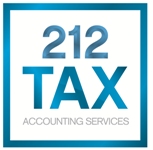If you think the alternative minimum tax only affects the wealthiest taxpayers, think again. The alternative minimum tax, originally intended to assure that wealthy taxpayers pay at least some tax, has been increasingly affecting middle-income filers in recent years. This is especially true if you have children or live in a high-tax region such as New York City.
Unsure if the Alternative Minimum Tax applies to you? In this article, we’ll help you understand what the AMT is, how to determine your exposure, and how to get the most out of your return.
What Is the Alternative Minimum Tax?
The alternative minimum tax calculation is a separate and parallel tax system. It calculates “minimum tax” based on fewer deductions. The preparer then compares the AMT calculation to the regular tax owed. Based on the calculation, the taxpayer is required to pay the higher of the two amounts. Because there have been no inflation adjustments to the AMT, even middle-income taxpayers can find themselves owing thousands of additional dollars every year to the federal government.
Your Exposure to the AMT
Certain investments affect your exposure to the AMT. For example, if you have a high concentration of qualified dividend income and long-term capital gains, you can wind up owing AMT. There are other factors that negatively affect the likelihood that you will owe additional tax in the form of the AMT. These include:
Incentive stock options
Private activity bond interests issued after August 1986
Certain real estate investments
Estates and trusts
Unfortunately, the list does not end there. Personal exemptions are limited under the AMT rules, as well as state and local income and property taxes. Investment management fees, tax preparation fees, and medical and dental expenses are not included in the AMT calculation. Mortgage interest, passive income, and employee business expense deductions may also be reduced or eliminated. That means taxpayers with significant deductions in these categories can expect to pay more, thanks to the AMT.
Who Is Affected Most?
The IRS National Taxpayer Advocate reported in 2006 that the AMT punishes taxpayers for activities that standard tax rules try to reward. If you have children or live in a high-tax state, you might find yourself subject to the AMT. Taxpayers in the NYC region — especially married taxpayers who earn dual incomes — often owe AMT even though the cost of living is much higher than the national average.
Managing the AMT
Unless you plan to stop investing, deducting medical and mortgage expenses, or working for yourself, there is little you can do about the AMT. However, you may be able to better plan for the future with professional tax advice —and maximize the power of your available deductions with help from the tax accountants at 212 Tax.
At 212 Tax, our tax accountants understand the specific challenges taxpayers face in New York City. We can review your finances and prepare a return that will maximize your tax benefits while preserving more of your income.
For more information on the alternative minimum tax, schedule a consultation with 212 Tax.
Request a Consultation
We are able to work with your unique schedule including after-hour appointments, most weeknights, and weekends.
Call to action
Build Growth Opportunities with Extensive Business Financial Services
We serve clients in a range of industries, including hospitality, nightlife, real estate, legal, and medical.


